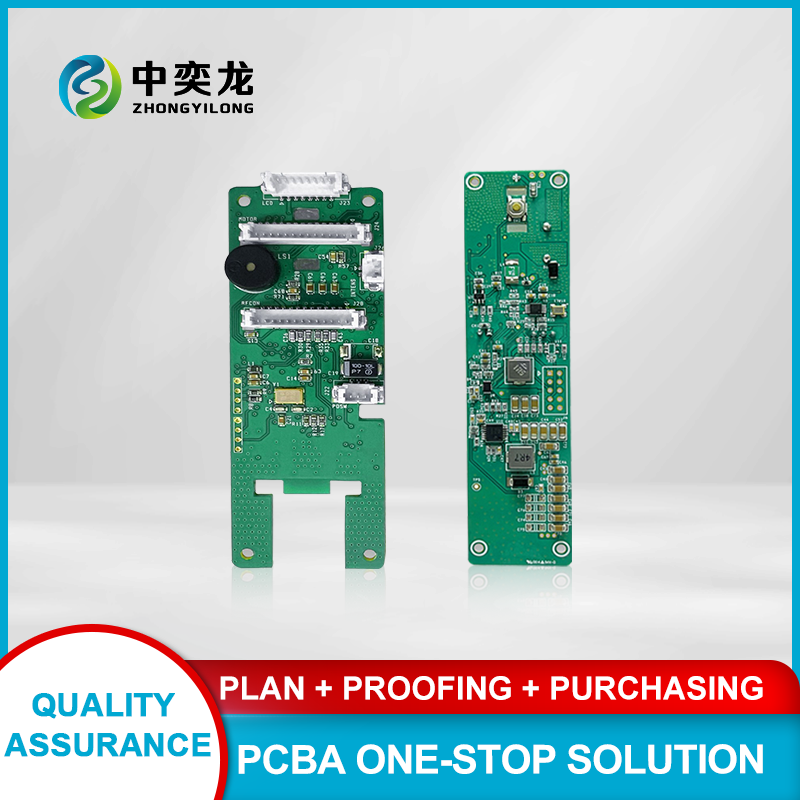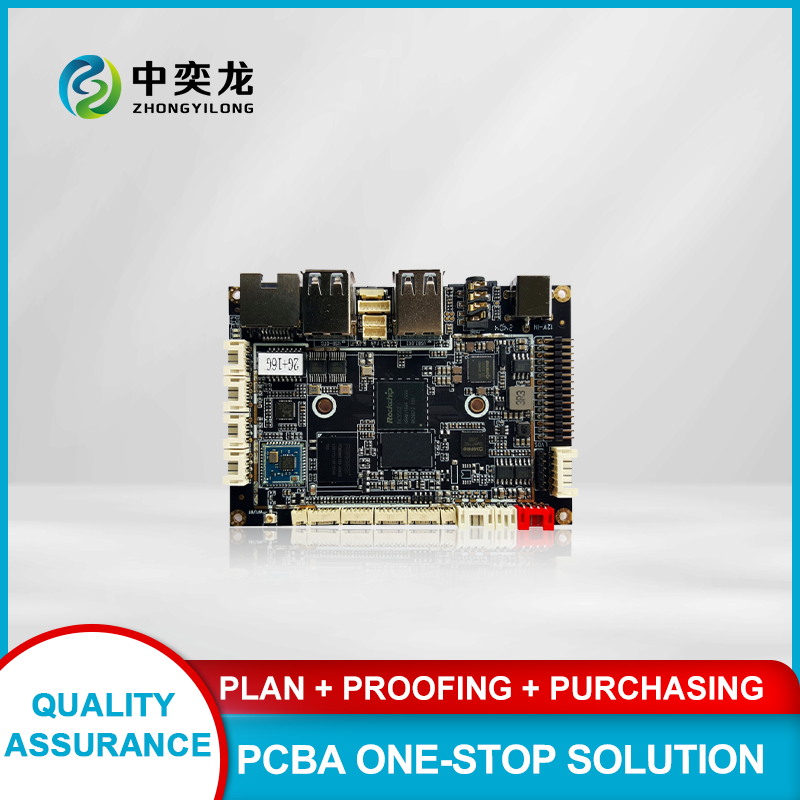
The Critical Role of Thermal Management in Blood Pressure Monitor PCBAs
2025-07-01
The Critical Role of Thermal Management in Blood Pressure Monitor PCBAs
Managing heat effectively within Blood Pressure Monitor PCBAs (Printed Circuit Board Assemblies) is not merely a technical consideration; it is crucial for ensuring device performance, reliability, and patient safety. As the demand for precise and reliable medical devices continues to grow, understanding the importance of thermal management becomes increasingly vital.
Understanding Blood Pressure Monitors and Their Components
Blood pressure monitors, commonly used in both clinical and home settings, consist of several key components that work together to provide accurate readings. These devices typically include sensors, a microcontroller, a display, and various electronic components integrated into a PCB.
The PCB serves as the backbone of the device, housing all electronic connections and components necessary for functionality. Ensuring that this assembly operates efficiently involves careful consideration of thermal management, which can directly impact the accuracy and longevity of the device.
What is Thermal Management?
Thermal management refers to the process of controlling the temperature of electronic devices to ensure optimal performance. This involves the use of thermal interface materials, heat sinks, and other methods to dissipate heat generated by various components during operation. Effective thermal management is essential to prevent overheating, which can lead to component failure, reduced accuracy, and safety risks.
The Impact of Heat on Blood Pressure Monitors
In blood pressure monitors, excessive heat can adversely affect the performance of sensors and microcontrollers. These components are sensitive to temperature changes, which can lead to inaccurate readings and compromised device reliability. Moreover, prolonged exposure to high temperatures can shorten the lifespan of the components, resulting in increased maintenance costs and device replacement frequency.
The Importance of Effective Thermal Management
Effective thermal management is vital for several reasons, including enhanced accuracy, improved reliability, and compliance with medical device standards.
Enhancing Accuracy in Measurements
Blood pressure monitoring relies on precise measurements to provide accurate readings. Heat can cause fluctuations in electronic signals, leading to erroneous readings. By managing thermal conditions, we can minimize these fluctuations, ensuring that the blood pressure monitor provides consistent and reliable data.
Improving Reliability and Lifespan of the Device
Heat can accelerate the aging process of electronic components. By implementing effective thermal management strategies, such as utilizing heat sinks and thermal pads, we can protect sensitive components from overheating. This not only enhances the reliability of the device but also extends its operational lifespan, ultimately benefiting both manufacturers and users.
Compliance with Industry Standards
Medical devices are subject to stringent regulations and standards, including those set by organizations such as the FDA and ISO. These standards often require devices to demonstrate a specific level of thermal performance. By prioritizing thermal management, manufacturers can ensure their products meet these regulations, thereby facilitating smoother approval processes and enhancing market competitiveness.
Strategies for Effective Thermal Management in PCBAs
Implementing effective thermal management strategies is essential for optimizing the performance of Blood Pressure Monitor PCBAs. Here are several approaches that can significantly enhance thermal performance.
1. Use of Thermal Interface Materials (TIMs)
Thermal interface materials play a crucial role in improving thermal conductivity between components and heat sinks. These materials fill microscopic gaps and imperfections, ensuring a more efficient heat transfer. Common TIMs include thermal pastes, pads, and adhesives.
2. Design for Thermal Efficiency
Designing the PCB layout with thermal management in mind is vital. This includes optimizing the placement of heat-generating components away from sensitive areas and ensuring proper airflow within the device casing.
3. Incorporating Heat Sinks
Heat sinks are devices designed to dissipate heat away from critical components. By choosing the appropriate size and material for heat sinks, manufacturers can significantly improve heat dissipation, thus maintaining optimal operating temperatures.
4. Implementing Active Cooling Solutions
In some applications, passive cooling may not suffice. Active cooling solutions, such as fans or Peltier devices, can be used to maintain lower temperatures within the device. While these solutions may increase complexity and energy consumption, they can be essential in high-performance medical devices.
5. Conducting Thermal Analysis and Simulations
Before finalizing designs, conducting thorough thermal analysis and simulations can identify potential thermal issues. Utilizing computational fluid dynamics (CFD) tools allows engineers to predict heat flow and distribution, enabling them to make informed design adjustments.
Challenges in Thermal Management for Medical Devices
While there are various strategies for effective thermal management, several challenges can arise during implementation.
1. Space Constraints
Medical devices, including blood pressure monitors, often have compact designs. This can limit the space available for heat dissipation solutions, making it challenging to implement effective thermal management strategies.
2. Balancing Cost and Performance
While many thermal management solutions are effective, they may also increase manufacturing costs. Striking a balance between high-performance thermal solutions and cost-effective manufacturing remains a challenge for many device manufacturers.
3. Evolving Technology
As technology advances, new components with different thermal properties are introduced. Keeping abreast of these changes and adapting thermal management strategies accordingly is essential for device manufacturers.
The Future of Thermal Management in Blood Pressure Monitors
As the demand for more sophisticated and accurate medical devices increases, the importance of thermal management in Blood Pressure Monitor PCBAs will continue to grow. Innovations in materials, design, and cooling technologies promise to enhance thermal management solutions, enabling better patient outcomes.
Emerging Materials and Technologies
New materials, such as advanced thermal interface materials and innovative heat sink designs, are being developed to improve thermal performance. Additionally, the integration of IoT technology into medical devices may necessitate new thermal management approaches to accommodate increased functionality without compromising thermal efficiency.
Regulatory Considerations
As thermal management becomes a more critical aspect of medical device design, regulatory bodies may impose stricter guidelines. Staying ahead of these changes will be crucial for manufacturers looking to remain competitive in a rapidly evolving market.
Frequently Asked Questions
1. Why is thermal management important in blood pressure monitors?
Effective thermal management ensures accurate readings, enhances device reliability, and complies with medical device regulations.
2. What are common thermal management strategies for PCBAs?
Common strategies include using thermal interface materials, incorporating heat sinks, and conducting thermal analysis and simulations.
3. How does heat affect the accuracy of blood pressure monitors?
Excessive heat can lead to fluctuations in electronic signals, resulting in inaccurate measurements.
4. What are the challenges in implementing thermal management?
Challenges include space constraints, balancing cost with performance, and keeping up with evolving technology.
5. What is the future of thermal management in medical devices?
The future will likely involve emerging materials and technologies, along with evolving regulatory considerations.
Conclusion
In conclusion, the importance of thermal management in Blood Pressure Monitor PCBAs cannot be overstated. As medical devices evolve and become more sophisticated, effective thermal management strategies will play a crucial role in ensuring device performance, reliability, and patient safety. By adopting innovative solutions and keeping abreast of industry developments, manufacturers can enhance their products and ultimately contribute to better healthcare outcomes.
Related News












 WhatsApp
WhatsApp
 E-mail
E-mail